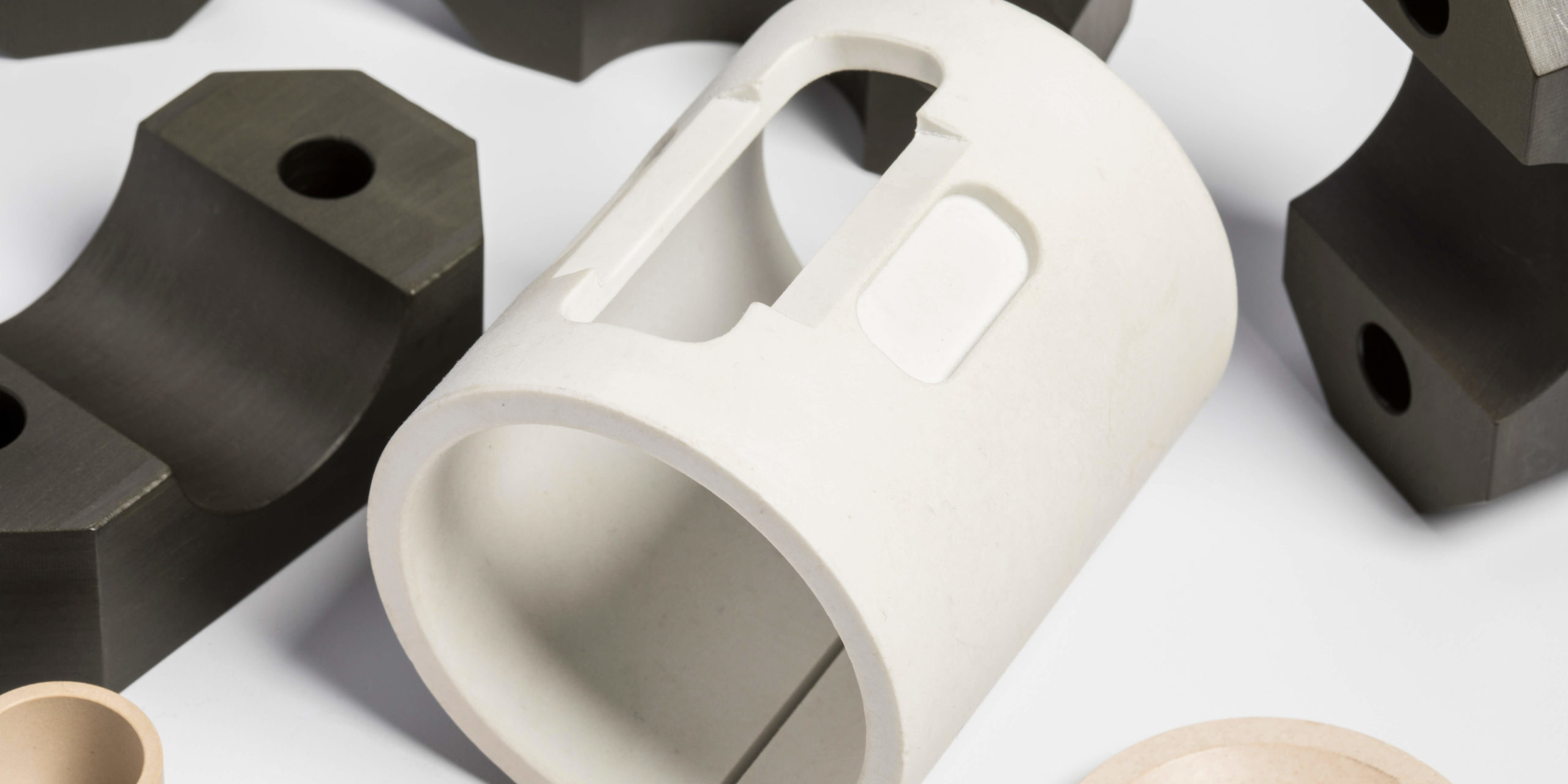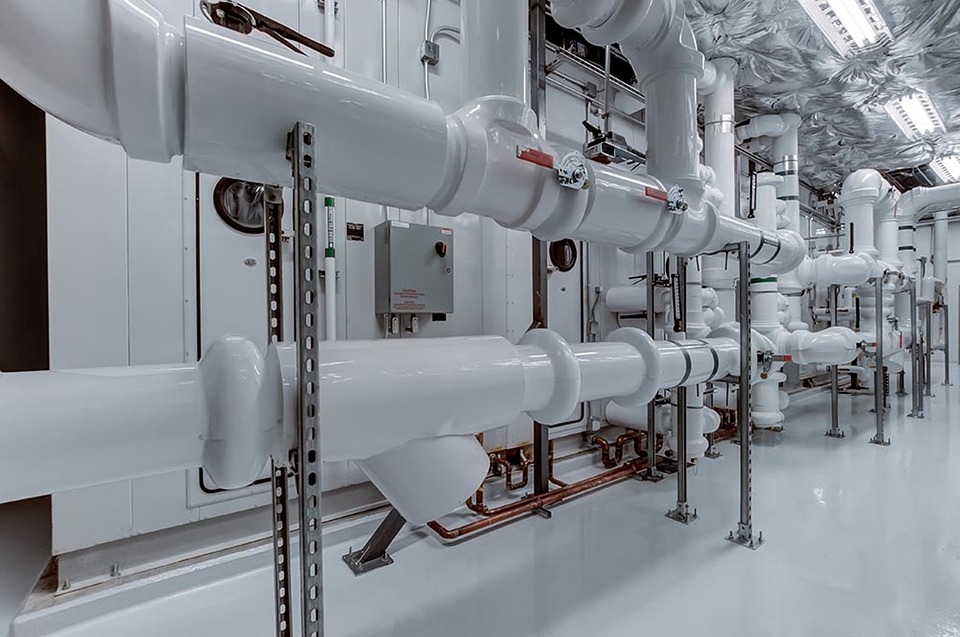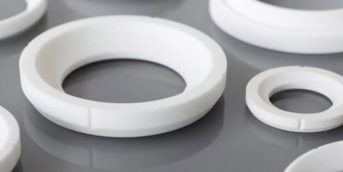Self-lubricating polymer bearings are an excellent alternative to traditional bearings when design engineers are looking to reduce the need for routine service, extend uptime, and improve the reliability of their products. These bearings may be naturally self-lubricating or include solid lubricants in the polymer to achieve low-friction motion without the need for oil or grease.
In this blog post, we talk about how these bearings support maintenance-free designs, the advantages of using them, and the key considerations for their design.
The Cost of Downtime in Modern Equipment
Downtime is a significant problem in nearly every industry, from manufacturing to aerospace to robotics. Many of the outages experienced by equipment in these industries can be traced back to bearings, and further to lubrication issues, contamination, or lack of maintenance.
Traditional plane bearings rely on either manual greasing or centralized lubrication systems to maintain low friction and prevent wear. Such systems add complexity, require regular attention, and are susceptible to failures. However, in a maintenance-free design, these weak points can be eliminated through the use of self-lubricating polymer bearings. These bearings are inherently resistant to contamination, unaffected by lubrication schedule errors, and capable of operating for years without intervention.
How Self-Lubricating Polymer Bearings Support Maintenance-Free Design
The key to the self-lubricating performance of polymer bearings such as filled PTFE and PEEK lies in the material structure. Solid lubricants such as PTFE, graphite, or molybdenum disulfide (MoS₂) are dispersed uniformly throughout a polymer matrix. During operation, microscopic particles of these lubricants are transferred to the shaft or mating surface. This forms a continuous, low-friction film, reducing direct surface-to-surface contact, keeping operating torque low, minimizing wear, and eliminating the need for lubricants like oil or grease.
Unlike conventional lubrication, there is no dependence on things such as oil viscosity, pump function, or lubricant replenishment. Self-lubrication is self-sustaining. Lubrication is always present, even at startup, in stop-and-go motion, or during oscillating loads. This approach to lubrication makes it particularly valuable for high-speed equipment, equipment that runs 24/7, precision actuators, and\ enclosed systems where regular access for lubrication is difficult or impossible.
Advantages of Maintenance-Free Design with Self-Lubricating Bearings
Let us look at some of the advantages of maintenance-free design, especially as it applies to self-lubricating polymer bearings.
Reduced Maintenance Intervals
By eliminating the need for external lubrication, self-lubricating engineering polymers have the potential to significantly extend equipment service schedules. This, in turn, reduces the number of planned maintenance stops and minimizes the likelihood of lubrication-related failures. The result is more equipment with more consistent productivity and far less unplanned downtime. Furthermore, in remote or hazardous environments, such advantages can be critical. Gaining access for maintenance might be expensive, put technicians in danger, or be extremely difficult to achieve. Maintenance-free design can minimize or completely eliminate those challenges.

Improved Cleanliness
Leaks or aerosolized mists (which are often prevalent in high-speed applications) are a problem with traditional bearings. Small amounts of grease or oil lubrication can cause contamination, leading to a reduction in product quality or safety for areas such as food processing, medical devices, and electronics assembly.
Self-lubricating polymer bearings, however, avoid these issues entirely. When solid lubricants are embedded in the material, the polymer bearings are able to maintain smooth operation without producing or spreading liquid lubricants. This results in a cleaner, safer operating environment that meets strict regulatory and quality standards.
Corrosion Resistance
Metal bearings can experience rust, seizing, or surface degradation, but self-lubricating, polymer bearings maintain their performance over time. This corrosion resistance reduces the need for protective coatings, seals, or other corrosion-prevention measures, simplifying both design and maintenance.
Engineering polymers such as filled PTFE or PEEK exhibit excellent resistance to water, aggressive chemicals, and potentially corrosive agents. This chemical stability makes them an excellent choice for use in wet, chemically aggressive, or outdoor environments.
Consistent Performance
One of the performance benefits of self-lubricating polymer bearings is their ability to maintain stable friction coefficients across a range of operating temperatures. Self-lubricating bearings can deliver highly predictable torque and very smooth motion when under sustained high temperatures or cold running.
Such stability is maintained through repeated thermal cycles that often lead to the failure of metal bearings, including expansion and contraction or a change in the viscosity of the lubricants.
Considerations for Maintenance-Free Bearing Design
Here is a short summary of key design considerations when aiming for maintenance-free design using self-lubricating polymer designs..
| Design Factor | Key Details |
| Load and PV limits | Each polymer formulation has a defined pressure–velocity (PV) limit that must be respected to avoid premature wear. Virgin PTFE, for example, typically supports continuous PV ratings of 1,000–3,000 psi·ft/min, while filled PTFE can reach 4,000–10,000+ psi·ft/min. |
| Thermal expansion management | Polymers such as PTFE have a higher coefficient of thermal expansion than metals, which can impact bearing clearance. Designers should select an appropriate fit—press, interference, or adhesive bonding—based on expected thermal cycling and load conditions. |
| Shaft surface requirements | Shaft finish directly affects transfer film formation. Experts usually recommend an Ra of 8–16 µin (0.2–0.4 µm) with a hardness of at least 55–60 HRC to prevent wear. |
| Environmental factors | Exposure to dust, moisture, chemicals, and temperature extremes should be considered when selecting polymer type and fillers. Hybrid formulations can combine multiple performance traits such as high load capacity, chemical resistance, and low wear. |
Conclusion
Every maintenance task carries a cost that is not just in labor, but in production delays and lost opportunity. Self-lubricating polymer bearings support the goals of maintenance-free design by eliminating the need for lubrication and eliminating a major source of equipment failure. As industries continue to push for higher uptime and lower operating costs, integrating self-lubricating polymer bearings early in the design process can deliver significant benefits in reliability and performance.
If you are considering self-lubricating polymers for your next design, contact Advanced EMC today. Our team of experts can advise you on the best choices for your application and supply you with the bearing solutions you need.



